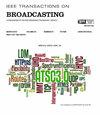基于加权结构和纹理特征的低复杂度补丁无参考点云质量度量
IF 4.8
1区 计算机科学
Q2 ENGINEERING, ELECTRICAL & ELECTRONIC
引用次数: 0
摘要
在点云的压缩、传输和渲染过程中,会引入各种各样的伪影,影响最终用户感知到的质量。然而,评估这些扭曲对整体质量的影响是一项具有挑战性的任务。本研究介绍了PST-PCQA,一种基于低复杂度、基于学习的框架的无参考点云质量度量。它通过分析单个补丁来评估点云质量,整合局部和全局特征来预测平均意见得分。总之,这个过程包括从补丁中提取特征,组合它们,并使用相关权重来预测整体质量。这种方法允许我们在不依赖参考点云的情况下评估点云的质量,使其在无法获得参考数据的情况下特别有用。通过分析不同的特征池化策略及其在不同数据集上的泛化能力,在三个最新数据集上的实验测试表明,PST-PCQA具有良好的预测能力。消融研究证实了逐片评估质量的益处。此外,PST-PCQA的轻量结构,需要学习的参数很少,使其非常适合实时应用和计算能力有限的设备。出于再现性的考虑,我们在https://github.com/michaelneri/PST-PCQA上提供了代码、模型和预训练的权重。本文章由计算机程序翻译,如有差异,请以英文原文为准。
Low-Complexity Patch-Based No-Reference Point Cloud Quality Metric Exploiting Weighted Structure and Texture Features
During the compression, transmission, and rendering of point clouds, various artifacts are introduced, affecting the quality perceived by the end user. However, evaluating the impact of these distortions on the overall quality is a challenging task. This study introduces PST-PCQA, a no-reference point cloud quality metric based on a low-complexity, learning-based framework. It evaluates point cloud quality by analyzing individual patches, integrating local and global features to predict the Mean Opinion Score. In summary, the process involves extracting features from patches, combining them, and using correlation weights to predict the overall quality. This approach allows us to assess point cloud quality without relying on a reference point cloud, making it particularly useful in scenarios where reference data is unavailable. Experimental tests on three state-of-the-art datasets show good prediction capabilities of PST-PCQA, through the analysis of different feature pooling strategies and its ability to generalize across different datasets. The ablation study confirms the benefits of evaluating quality on a patch-by-patch basis. Additionally, PST-PCQA’s light-weight structure, with a small number of parameters to learn, makes it well-suited for real-time applications and devices with limited computational capacity. For reproducibility purposes, we made code, model, and pretrained weights available at https://github.com/michaelneri/PST-PCQA .
求助全文
通过发布文献求助,成功后即可免费获取论文全文。
去求助
来源期刊

IEEE Transactions on Broadcasting
工程技术-电信学
CiteScore
9.40
自引率
31.10%
发文量
79
审稿时长
6-12 weeks
期刊介绍:
The Society’s Field of Interest is “Devices, equipment, techniques and systems related to broadcast technology, including the production, distribution, transmission, and propagation aspects.” In addition to this formal FOI statement, which is used to provide guidance to the Publications Committee in the selection of content, the AdCom has further resolved that “broadcast systems includes all aspects of transmission, propagation, and reception.”
 求助内容:
求助内容: 应助结果提醒方式:
应助结果提醒方式:


